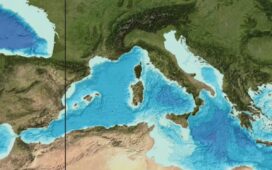A mysterious sea urchin plague has spread across the world, causing the near extinction of the creature in some areas and threatening delicate coral reef ecosystems, a new study suggests.
The research, published in the scientific journal Current Biology, found populations of two sea urchin species – the long-spined Diadema setosum and the banded-spiny Echinothrix calamaris – may have been completely wiped out in some parts of the Gulf of Aqaba, Red Sea, the Gulf of Oman, and the Western Indian Ocean.
The deaths have been attributed to an egg-shaped single-celled microorganism with hairlike attachments, which causes the sea urchins to lose spines, experience tissue breakdown, and eventually die within as little as two days.
Tel Aviv University marine biologist and lead author of the study, Dr Omri Bronstein, told The Independent that witnessing the mass deaths was “heartbreaking”.
“These are the animals we know and love very much,” he added.
“When they are alive, the family of sea urchins affected by the disease are completely black with very long and sharp spines, but when they die, they lose their spines and tissues, showing their completely white and smooth skeleton.
“They almost look like bleached corals but more severe in the sense that the spines are also gone – imagine seeing a human with no hair with their inner skeleton exposed. It’s a hard sight.”
One of the most notorious sea urchin mass deaths took place in the Caribbean Sea in 1983, affecting a black-spined urchin species called Diadema antillarum . At the time, scientists were unable to identify the cause of the event because of limited technology.
Nearly four decades later, another mass death event of the same species took place in the Caribbean Sea in 2022. Initially, researchers were unable to find any traces of bacterial or viral infections in the creatures, but eventually identified the microorganism behind the disase.
Following the Caribbean die-off, the first known mass mortality of Diadema setosum, a species related to Diadema antillarum, was reported in the eastern Mediterranean Sea in 2023, with the same pathogen found to be responsible.

Now that the disease-causing microorganism has spread to multiple regions in the Middle East, researchers of the study are asking for immediate monitoring and conservation action to protect these sea urchins.
“Functionally, the sea urchin family attacked by this pathogen is already extinct in the Red Sea,” he said. “It’s a serious threat now for the entire Indo Pacific.”
He added there is a “real risk” of these urchins becoming functionally extinct all over the world: “All you need is one vessel that cruises down the Red Sea and a few weeks, and the pathogen is there.”
Dr Bronstein warned the mass deaths could result in a rapid increase in algae, which urchins normally feed on. This may in turn disrupt the health of coral reefs in affected regions.
“My worst fear is that we would have significant algal bloom, leading to coral reefs being suffocated and dying in overfished and less protected areas around the world,” he said. “Once this happens, even if the sea urchins returned, it would be too late for the reefs.”

Dr Bronstein also told The Independent the loss of coral reefs would impact people in Europe and the West just as much as it would affect those living next to these marine rainforests, disrupting political stability, food security, cancer drug research, and economies in addition to biodiversity.
He added: “We’re still trying to figure out several key questions – for example, why here, why now? How did this pathogen really travel from the Caribbean to the Red Sea?”
He is working with colleagues to complete a study that he hopes will answer these questions and manage the crisis.












